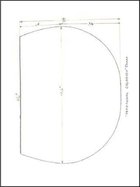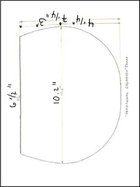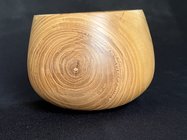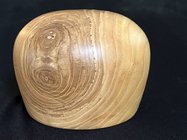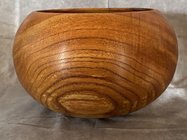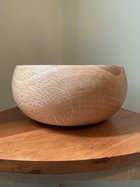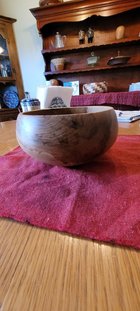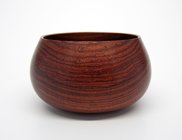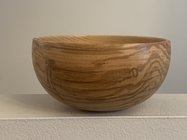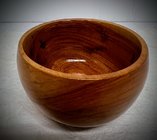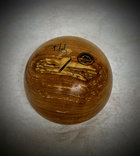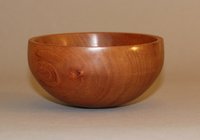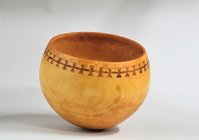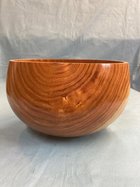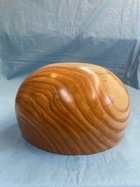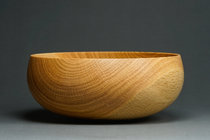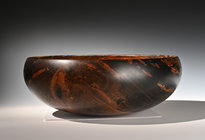For this month's turning challenge, we are going to do something easy, A low-sided, side-grain Hawaiian Calabash. I'm saying easy because I will let you use your lathe and high-speed steel bowl gouges, NRS, and whatever else you think you need. The ancient Hawaiians made them with stone adzes and fire, sitting by the beach for months, perhaps years, carefully making timeless pieces for the King and his family.
The main characteristic of a Calabash is the round bottom. No matter the type and or size, they had a thick round bottom. They are so round that they resemble a bowling ball. No tenons or anything added for decoration, just a small dimple, perhaps that wasn't even there from the beginning; it was worn out by the generations of use. I will add below a diagram. It is just about the perfect calabash. It is a copy of a drawing made by a club member on one of the other Islands, Big Island, I believe, for one of their meetings. If you take a look at the Calabash exhibit at the Bishop Museum in Oahu, you will see that there are lots of different styles and sizes of them. Not 2 were exactly alike.
And finally, the fine print from the official AAW Forum legal consultants -- Dewey, Cheatum, and Howe:
The main characteristic of a Calabash is the round bottom. No matter the type and or size, they had a thick round bottom. They are so round that they resemble a bowling ball. No tenons or anything added for decoration, just a small dimple, perhaps that wasn't even there from the beginning; it was worn out by the generations of use. I will add below a diagram. It is just about the perfect calabash. It is a copy of a drawing made by a club member on one of the other Islands, Big Island, I believe, for one of their meetings. If you take a look at the Calabash exhibit at the Bishop Museum in Oahu, you will see that there are lots of different styles and sizes of them. Not 2 were exactly alike.
And finally, the fine print from the official AAW Forum legal consultants -- Dewey, Cheatum, and Howe:
- Only one entry per person and one main photo of your calabash. A departure from the past -- you may also include one close-up detail photo.
- Entries must be posted in this thread.
- The deadline for posting entries is midnight Coordinated Universal Time (UTC) on August 24, 2023.
- As always, this is a turning contest, not a "moldy oldie" photo contest, so in fairness to everybody, make sure your work is something you have made since this challenge was issued on August 3 2023.
- You may not post any photos of your entry in this month’s challenge in any other thread or in the gallery until the voting has ended and a winner has been declared.
- Voting will take place from August 28, 2023, through midnight UTC on September 1, 2023.
- Solicitation of votes will result in disqualification.
- The winner might have to pass a lie detector test before collecting the prizes.
 Good luck, have fun, make shavings, and let the chips fall where they may!!
Good luck, have fun, make shavings, and let the chips fall where they may!!
Attachments
Last edited:

